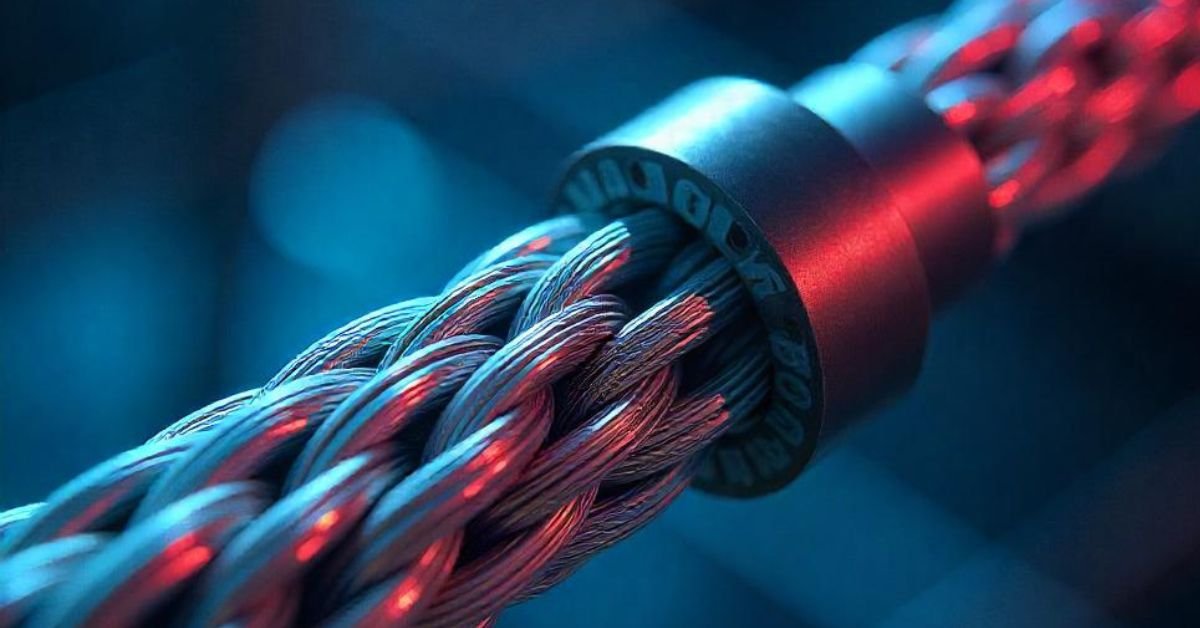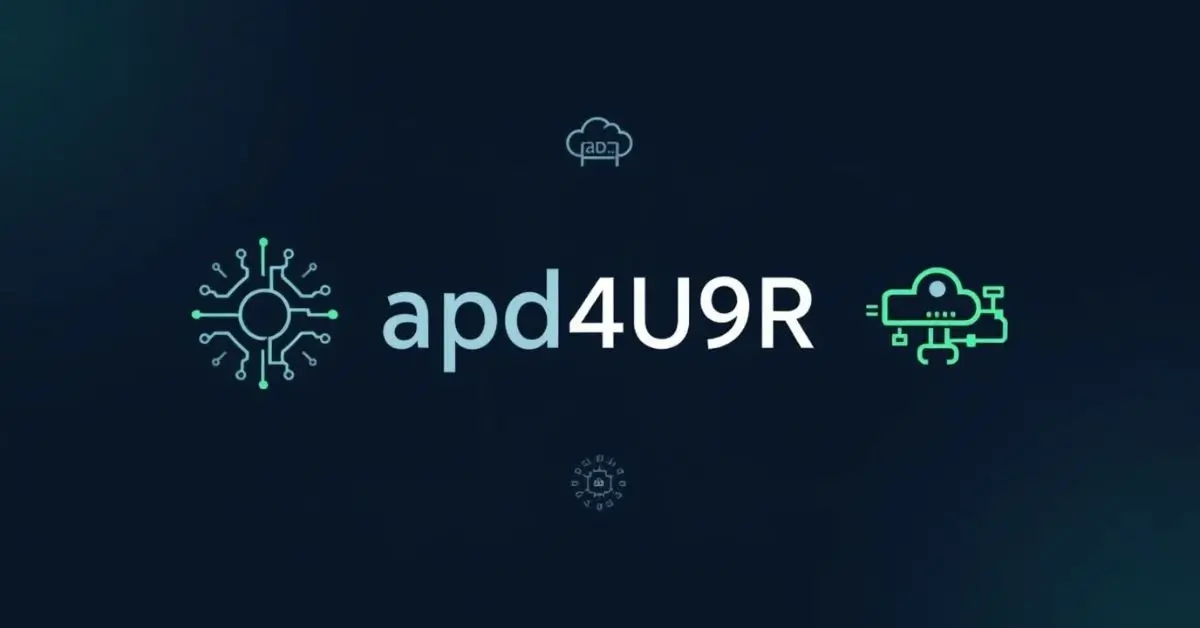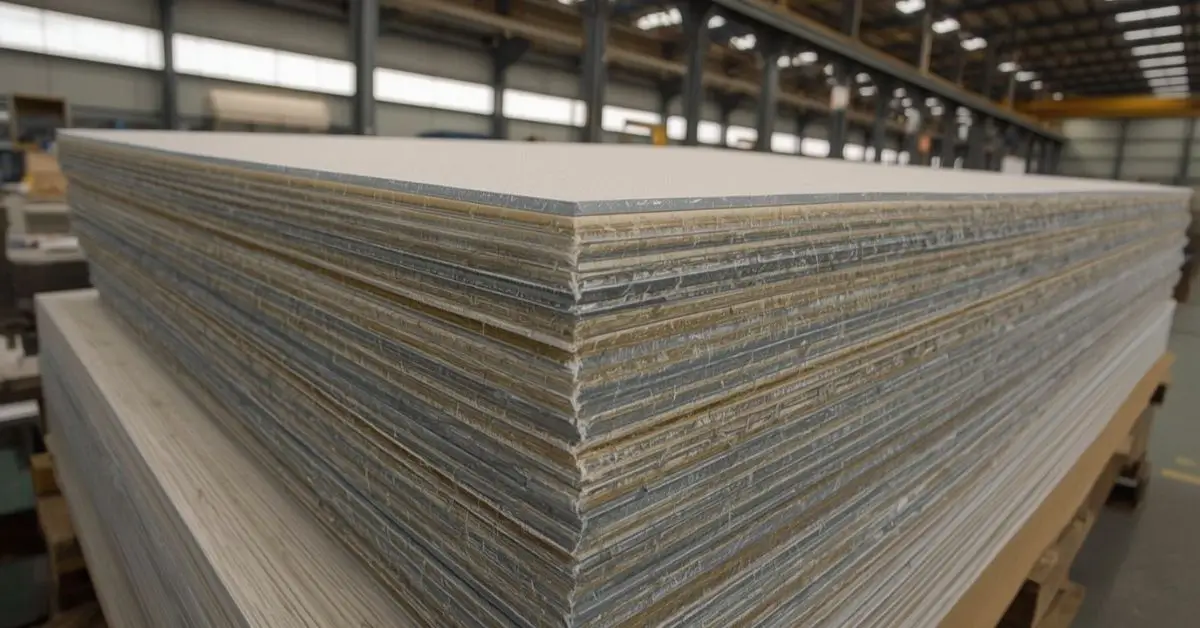BLOG
Tensile Threads: The Strength Behind Aircraft Cable

Tensile Threads Aircraft cable, the lifeline that connects flight controls, secures landing gear, and ensures the seamless transmission of mechanical forces, is a marvel of modern engineering. From its high-tensile steel composition to the precision manufacturing process, this unassuming yet critical component plays a pivotal role in aviation safety and performance.
Understanding Aircraft Cable Composition and Materials Tensile Threads
When you dive into the anatomy of a control cable, its construction reveals a sophisticated blend of materials. These cables often consist of high-grade galvanized steel or stainless steel wires, sometimes featuring corrosion-resistant coatings such as zinc or polymer sheaths. The strands within are meticulously wound, creating a flexible yet remarkably strong rope that maintains integrity under intense tension and repeated cycles of motion.
By leveraging multi-stranded steel—with intricate interlocking patterns—engineers achieve both high tensile strength and fatigue resistance. This is crucial when dealing with cyclic stresses in flight control systems or landing mechanisms, where precise responsiveness under dynamic loads is non-negotiable.

Manufacturing Processes and Quality Control
Behind every cable lies a controlled manufacturing process involving state-of-the-art machinery. Wire drawing reduces the diameter of steel rods through a series of dies, each pulling the wire to finer tolerances. Next, braiding machines twist these wires into coils, producing flexible cables capable of handling both tension and torque. Throughout these stages, quality control systems measure elongation, tensile yield points, and breaking strength to ensure compliance with stringent aviation standards.
Laboratory testing—including cyclic fatigue tests and environmental simulations—validates that every cable endures extremes in pressure, temperature, and vibration. These simulations mirror real-world scenarios, verifying durability from altitude changes to varying humidity, which is critical for maintaining lifecycle reliability in harsh environments.
The Role of Corrosion Resistance and Coatings
Aircraft operations expose cables to factors like airborne salts, moisture, and industrial pollutants, all of which demand robust corrosion protection. This is where stainless steel alloys and plated finishes come into play. A protective barrier—whether zinc, cadmium, or Teflon—helps prevent rust and reduces abrasion where cables pass through pulleys or fairleads.
Some cables also incorporate polymer jacketing, offering an extra layer of insulation and UV resistance. This design choice mitigates wire-on-wire contact and protects against wear, preserving both structural integrity and resistive computing over thousands of flight hours.
Installation, Routing, and Maintenance Best Practices
Proper cable routing within an aircraft is essential to avoid premature wear or mechanical interference. Technicians follow carefully designed schematics to maintain minimum bend radii and avoid sharp edges. Secure attachment via turnbuckles enables precise tensioning, essential for maintaining flight control harmony.
Maintenance inspections feature a multi-step process: visual checks look for frays, kinks, or broken strands; tactile inspections detect stiffness or corrosion; and gauging tools verify strand count and diameter. Condition-based maintenance ensures cables are replaced before fatigue failure, aligning with preventive aviation documentation and reliability-centered upkeep.
Applications in Flight Control Systems
Within the framework of flight controls, mechanical cables shuttle commands between cockpit levers and control surfaces. When a pilot nudges the yoke, these tension cables translate that deflection into movement at ailerons or elevators. Control stick cables, often pre-tensioned, deliver precise feedback and instantaneous responsiveness—keys to safe handling under turbulence and rapid maneuvers.
Multi-ply configurations help distribute forces, minimize harmonics, and reduce unwanted vibrations, contributing to the aircraft’s overall aerodynamic stability and pilot confidence.
Critical Use in Landing Gear and Trim Systems
Landing gear assemblies rely on cable-actuated mechanisms to deploy and retract landing gear smoothly and reliably. These cables connect to external actuators or lever systems, ensuring proper gear locking and warning systems activate as designed.
Similarly, trim cables adjust stabilizer surfaces or elevator trim tabs, allowing pilots to offload control pressures during cruise. Their fine-tuned stretch and low friction properties keep the airplane trimmed with minimal cockpit workload over varying speeds and weight distributions.
Ensuring Fatigue Resistance and Longevity
Cyclic loading is the hidden adversary of aircraft cable systems. Each takeoff, pitch adjustment, or landing cycle applies micro-stresses that accumulate over thousands of hours. To combat fatigue, engineers monitor factors like stress concentration points, cable sheath stress distribution, and environmental factors.
Fatigue-resistant alloys and end-fitting designs that reduce bending stress help extend cable service life. After a certain number of cycles, cables are subjected to non-destructive testing to check for fretting, internal wire failures, and load uniformity across strands. This rigorous lifecycle management is why aircraft control and landing systems maintain high reliability.
Future Trends: Composite Materials and Smart Monitoring
Recent advances explore the use of composite core cables, employing high-strength fibers like Kevlar or carbon fiber to weight-optimize while retaining tensile properties. Smart sensors embedded within polymer jackets are also on the horizon—reporting live tension, wear indicators, and even microfractures. These intelligent flight cables promise enhanced predictive maintenance and reduced downtime in complex fleet operations.
FAQs
Q: What determines the tensile strength of aircraft cable?
A: Tensile strength depends on steel alloy composition, heat treatment, wire-drawing quality, and strand configuration. Multi-stranded designs spread load and delay fatigue crack initiation.
Q: How often should aircraft cable be inspected?
A: Per common airworthiness directives, visual and tactile inspections occur every few hundred flight hours. However, fleet operators may schedule more frequently based on usage cycles and environmental exposure.
Q: Can aircraft cable be recycled?
A: Steel-based cables are recyclable through metal recovery programs. Before recycling, remove non-metal coatings or fittings. Some newer cable systems incorporate materials like polymer sheaths that require separate processing streams.
Q: What alternatives exist to steel wire cables?
A: Alternatives include steel–polymer hybrids, Kevlar-core cables, and hydraulic systems. Yet, traditional aircraft cable remains preferred for simplicity, weight efficiency, and predictable service life.
Q: How do corrosion coatings prolong cable service?
A: Plated finishes—like zinc or cadmium—create a sacrificial layer that oxidizes before the steel core. Polymer outer covers add abrasion resistance and hinder moisture ingress, slowing the corrosion process.
Conclusion
From control surface inputs to landing gear operation, aircraft cable plays an indispensable role in aviation systems. Its carefully engineered alloy composition, precise manufacturing, robust corrosion protection, and fatigue resilience make it an aviation-grade component worthy of attention. As modern aerospace moves toward smarter and lighter systems, cable innovations
BLOG
How apd4u9r Redefines Digital System Security

When you hear “apd4u9r identifier”, think of a unique label, a distinct tag that distinguishes one thing from another in a machine-readable world. Much like a UUID or a SKU, the apd49r identifier might be attached to a product, a software version, or a system component.
In one article, apd4ur is described as a “non-human-readable, encrypted ID used for secure referencing in systems — similar to a UUID or hash, but often shorter and system-scoped.” The shorthand nature of that identifier means fewer characters, faster look-ups, simpler prints—and in some contexts, better performance.
Think of it like your car’s VIN (vehicle identification number) or an asset tag in your organisation’s IT inventory. That’s what the apd4u9r identifier can be: compact, specific, and unique.
Why use a custom identifier like apd4u9r?
- It minimises conflict: if you generate your own code space, you avoid overlapping IDs.
- It enhances traceability: you can trace “this piece with code apd4ur” through production, deployment, and retirement.
- It supports system automation: when your scripts or modules reference apd4ur directly, there’s less human error.
- It can improve security: if your identifier scheme is non-intuitive, it’s harder for an attacker to guess patterns.
Key risks to keep in mind
- If you rely entirely on “apd4u9r”-style codes but don’t map them to human-readable context, your team may struggle.
- Unique identifiers need consistent governance: generating apd4u9r codes ad hoc without documentation leads to chaos.
- Over-engineering: if a simple SKU would do, using apd4u9r adds unnecessary complexity.
Understanding the apd4u9r Code & Module
Let’s get more tangible. The term apd4ur code usually means the label or value itself—“apd4u9r”. The apd4ur module often refers to the functional component in your system that handles that code: creation, lookup, mapping, lifecycle. So you have both: the label (code) and the working part (module) that makes it meaningful.
How the module typically works
- Generate the apd4ur code, e.g., when a new product or asset is introduced.
- Store the code in a registry or database with metadata: date/time, user, location, version.
- Use the apd4ur module in your workflow: deployment scripts, asset tracking apps, integration endpoints.
- Retire or archive the code when the item is obsolete.
Here’s a real-life example (anonymous user quote):
“We labelled every server rack with an apd4u9r tag and immediately saw fewer errors during audits—no more duplicates, no more ‘unknown asset’ incidents.”
That shows the power of pairing code and module: you don’t just name it “apd4ur”, you operationalise it with a process.
Pros & cons of this approach
Pros
- Scalability: Once your module is set up, you can generate thousands of apd4u9r codes quickly.
- Uniformity: Your tracking, logging and dashboards speak the same language.
- Enhancement: The module can later integrate features like de-duplication, analytics, automation.
Cons
- Implementation cost: Building and maintaining the module takes resources.
- Training needed: Teams must know what “apd4u9r” refers to—they can’t treat it like just another label.
- Risk of misuse: Without governance, codes can be mis-assigned, mis-entered, leading to confusion.
The apd4u9r System & Framework in Business Context
When we speak of the apd49r system, we mean the end-to-end environment where apd4u9r codes and modules are used. The apd4ur framework is the underlying architecture: rules, processes, standards, integrations.
What a full system looks like
- Code generation engine (creates apd4u9r codes).
- Registry or directory (stores metadata and linkage).
- APIs/outbound connectors (so other systems can reference apd4u9r).
- Monitoring/dashboard (tracks code usage, lifecycle, inconsistencies).
- Governance policy (defines who creates codes, how conflicts are resolved, how retirements happen).
Why this matters now (2025 perspective)
In today’s digital ecosystem, more organisations face hybrid infrastructures, remote assets, and faster change cycles. A system built on the apd49r framework gives you:
- Agility: Integrate new modules or assets without reinventing your code strategy.
- Visibility: Trace items across cloud, on-prem, and edge systems.
- Security: With a unified code system, you can audit access, usage, and retirement comprehensively.
Use-case spotlight: cybersecurity
When you deploy an apd49r system in your cybersecurity stack, you assign every asset—workstations, servers, network components—an apd4u9r product ID. Then you can tie alerts, logs, and response actions back to that unique ID. Over time, your threat response team can ask: “Which apd4u9r codes were involved in the breach?” That pinpoint clarity is a huge advantage.
Tracking apd4u9r Version, Specification & Integration
When you adopt apd49r in an enterprise, you’ll want to track versions , define a specification , and ensure other systems can consume or link to it .
apd4u9r versioning
Versioning is critical. Perhaps you start with version 1.0 of your apd4u9r code scheme. Later you might evolve to version 2.0 with new prefixes or suffixes, or extra attributes. Tracking versions avoids confusion when older codes may still exist.
apd4u9r specification
A formal spec might say: “An apd49r code is 7 alphanumeric characters, begins with ‘ap’, ends with a digit, and is case-insensitive.” That’s your apd4u9r specification. It ensures consistency across:
- asset labels
- database records
- API endpoints
apd4u9r integration
Integration means tying your apd4u9r codes into other applications—ERP, CRM, inventory systems, cybersecurity platforms. For example: Your inventory tag (the apd4u9r alphanumeric code) is also referenced in your purchasing system, your service logs, and your audit report. That seamless link is integration in action.
apd4u9r Automation & Cybersecurity: Why They Matter
Now, let’s talk about its automation and its cybersecurity. These are two powerful themes for business operations in 2025.
Automation with apd4u9r
Automating code generation, assignment, and retirement reduces human error. For example:
- When a new device is onboarded, the system automatically assigns an apd4u9r tag.
- Service events trigger automated audit updates referencing the apd4u9r product ID.
- Decommission workflows automatically archive the apd4u9r code and map to its successor.
This kind of automation improves speed, accuracy, and frees up team resources for higher-value work.
Cybersecurity implications
Assigning an apd4u9r tag to every asset means you can:
- Map vulnerabilities to specific identifiers—“Asset apd4u9r-B12 has pending patch.”
- Track incident responses: every step references the apd4u9r code.
- Create audit trails: when you retire a component, record “apd4u9r code decommissioned on date X by user Y”.
In short, your cybersecurity posture gains precision and accountability when coupled with well-managed apd4u9r codes.
Inventory Use: apd4u9r Inventory Tag & Product ID
Another common place you’ll see apd4u9r is in physical inventory or product tracking. Let’s talk about the apd4u9r inventory tag and the apd4u9r product ID.
Inventory tag
In a manufacturing or warehousing scenario, each unit might have a barcode or RFID with the apd4u9r alphanumeric code printed. Staff scan it, the system reads metadata, location, maintenance history. This reduces misplaced assets and improves audit accuracy.
Product ID
When the apd4u9r code serves as a product ID, you’re using it as the master reference across your supply chain—from vendor to storage to customer. You might advertise that “our product APD4U9R-X100” is compatible with Platform Y. That ensures no ambiguity.
The apd4u9r Enterprise Solution & Application in 2025
Finally, let’s consider the broader it enterprise solution, and its application in real-world settings.
Enterprise solution
For large organisations, adopting a unified apd4u9r framework becomes a strategic decision:
- It standardises identifiers across departments—IT, operations, security, logistics.
- It reduces silos by ensuring every system “speaks” the same code language.
- It supports governance and compliance by giving you end-to-end visibility.
Application
Here are two scenarios:
Scenario A – Global manufacturer
A multinational firm labels every machine, tool, and part with an apd4u9r code. Maintenance logs, performance dashboards, and audit trails all reference those codes. When a recall happens, they trace which apd4u9r codes were impacted, which factories produced them, and which systems they fed into.
Scenario B – Financial institution
A bank applies apd4u9r codes to its virtual machines, database instances, and network gateways. Their cybersecurity team uses the codes in their SOC (Security Operations Centre) to map alerts precisely: “Intrusion detected on asset apd4u9r-G54.” They integrate these codes into automation scripts that trigger response playbooks, reducing Mean Time To Detect (MTTD) and Mean Time To Respond (MTTR).
Pros, Cons & Considerations for Implementing apd4u9r
Pros
- Improved traceability and auditability
- Simplified integration and automation
- Stronger cybersecurity ties
- Scalable for enterprise use
Cons
- Requires upfront investment (design, infrastructure, process)
- Needs governance and user training
- Risk of code sprawl if not managed properly
- May add complexity if you only need simple identifiers
Key considerations
- Define your specification upfront: length, format, uniqueness constraints.
- Ensure every system that uses apd4u9r codes can integrate seamlessly.
- Plan for the full lifecycle: generation, usage, maintenance, retirement.
- Monitor actively: duplicate codes, orphan codes, unused codes waste value.
- Align with your security and audit policies: apd4u9r shouldn’t just exist—it should be tracked.
FAQ’s
Q1: What is the purpose of an apd4u9r identifier in inventory management?
A: The purpose is to assign a unique, system-wide identifier (apd4u9r identifier) to each asset or product so it can be tracked reliably across systems. By using an apd4u9r inventory tag, you reduce confusion, improve location tracking and simplify audits.
Q2: How does the apd4u9r code differ from a regular SKU or serial number?
A: While SKUs and serial numbers are traditional, the apd4u9r code is designed for broader integration—it often serves as the master reference across business systems, supports automation and may embed version or system context. The apd4u9r module linked to it ensures consistency and governance.
Q3: Can an apd4u9r system integrate with legacy platforms like ERP or CRM?
A: Yes. A well-designed apd4u9r system and framework includes APIs or connectors so other platforms (ERP, CRM, maintenance systems) reference the apd4u9r product ID and its metadata. The apd4u9r integration ensures you’re not reinventing identifiers in each silo.
Q4: What are common security risks when using an apd4u9r code system?
A: Common risks include: poorly documented codes leading to orphan assets; lack of access controls on code generation modules (allowing duplicates or malicious codes); insufficient linking between code and asset causing tracking gaps; no retirement process which means codes linger in systems indefinitely.
Final Thoughts
By now you should see that apd4u9r isn’t just a random string—it can be the linchpin of a modern asset-tracking, automation and cybersecurity strategy. From the apd4u9r identifier and code, through the module, system, framework and integration—each piece plays a role in creating clarity across your organisation.
BLOG
Why Fiberglass HT52H Is Essential for Heat-Resistant Uses

Fiberglass HT52H is a high-temperature fiberglass material designed for industrial applications where standard fiberglass falls short. With superior thermal resistance, mechanical strength, and chemical stability, HT52H is often the go-to for engineers tackling challenging environments.
Unlike conventional fiberglass sheets, HT52H fiberglass sheets are reinforced for extra durability and heat tolerance, making them ideal for machinery insulation, structural panels, and high-performance composite parts.
“We switched to HT52H panels in our assembly line, and the reduction in heat-related failures was remarkable,” shares an industrial fabrication engineer.
Key Properties of HT52H Fiberglass Sheets
When evaluating HT52H fiberglass sheets, understanding their core specifications is critical:
- High-temperature tolerance: Can withstand extreme heat without warping.
- Mechanical strength: Reinforced to handle high stress and load.
- Chemical resistance: Ideal for environments exposed to acids, oils, or solvents.
- Electrical insulation: Perfect for electrical boards and industrial components.
These features make HT52H a standout choice for industries requiring both durability and safety.
Applications of Fiberglass HT52H
Industrial Fiberglass HT52H Panels
Used in factories and machinery setups, fiberglass composite panels made from HT52H provide structural support while resisting heat and corrosion. These panels can replace metal in certain setups, reducing weight and energy costs.
Fiberglass Insulation Board
For thermal management, fiberglass insulation board HT52H helps maintain consistent temperatures, protecting sensitive components from heat exposure.
Fiberglass Rod HT52H for Reinforcement
Engineers use fiberglass rod HT52H to reinforce structures or composite materials. Its high tensile strength ensures reliability in demanding applications.
Thermal-Resistant Composite Material
In aerospace, automotive, and marine industries, thermal-resistant composite materials from HT52H provide lightweight yet sturdy solutions for heat-exposed parts.
Advantages of Using Fiberglass HT52H
- Longevity: Maintains integrity under high stress and temperature.
- Lightweight: Easier to handle compared to metal alternatives.
- Versatility: Works in panels, rods, and custom composite structures.
- Safety: Provides electrical and thermal insulation, reducing risk in industrial setups.
HT52H Fiberglass Specifications
| Specification | Value |
|---|---|
| Material Type | Fiberglass Reinforced Polymer |
| Heat Resistance | Up to 500°C (932°F) |
| Tensile Strength | 150 MPa |
| Electrical Insulation | Excellent |
| Chemical Resistance | High |
| Typical Applications | Panels, Rods, Insulation Boards |
These fiberglass HT52H specifications help engineers select the right material for their project without unnecessary guesswork.
How to Work with HT52H Fiberglass
Handling HT52H fiberglass requires care:
- Cutting: Use diamond-tipped tools or water jet cutting to avoid splintering.
- Drilling: Slow, steady drills prevent fiber fraying.
- Safety Gear: Gloves, goggles, and dust masks are essential.
Following proper techniques ensures maximum performance and safety.
Fiberglass HT52H vs Other High-Temperature Fiberglass Materials
| Feature | HT52H Fiberglass | Standard Fiberglass | Other HT Materials |
|---|---|---|---|
| Heat Resistance | Up to 500°C | 300°C | 400–450°C |
| Tensile Strength | 150 MPa | 90 MPa | 120 MPa |
| Chemical Resistance | High | Medium | High |
| Application Flexibility | Very High | Moderate | High |
Clearly, HT52H fiberglass sheets outperform standard fiberglass and other high-temperature materials in most industrial scenarios.
Real-Life Example
A marine engineering company replaced conventional fiberglass panels with HT52H fiberglass composite panels on their vessel engine covers. The result? Enhanced heat protection, reduced maintenance, and improved long-term durability — proving its industrial value.
Tips for Maximizing HT52H Fiberglass Performance
- Store sheets in dry, shaded areas to prevent moisture absorption.
- Combine with protective coatings if chemical exposure is high.
- Use proper reinforcement techniques for composite panels.
- Follow supplier specifications for load and temperature limits.
Where to Buy Fiberglass HT52H
Look for reputable industrial suppliers specializing in HT52H fiberglass sheets and rods. Verified distributors provide detailed fiberglass HT52H specifications and material certifications, ensuring safe and reliable performance.
FAQ‘s
Q1: What is fiberglass HT52H used for in industry?
A1: It’s used for high-temperature applications, including industrial panels, insulation boards, composite reinforcement, and thermal-resistant structures.
Q2: How strong is HT52H fiberglass compared to standard fiberglass?
A2: HT52H has a tensile strength of 150 MPa, significantly higher than standard fiberglass, making it suitable for demanding structural and industrial uses.
Q3: Can fiberglass HT52H withstand extreme heat?
A3: Yes, HT52H is designed to resist temperatures up to 500°C, making it ideal for engines, furnaces, and other high-heat environments.
Q4: How do I handle and cut HT52H fiberglass safely?
A4: Always use protective gloves, goggles, and masks. Cut with diamond-tipped tools or water jet cutters, and drill slowly to prevent fraying.
Conclusion
Fiberglass HT52H is a game-changer in high-temperature and industrial composite materials. Its durability, heat resistance, and versatility make it an essential choice for engineers, manufacturers, and R&D professionals.
BLOG
Why Is Latin Hard and How to Make It Easier

Is Latin hard? Many students and language enthusiasts ask this question when considering the ancient language of Rome. Latin has a reputation for being complex, mysterious, and, at times, intimidating. But how true is this perception? In this article, we’ll explore Latin language difficulty, practical learning tips, and why it’s still worth mastering in 2025.
Latin Language Difficulty – Myth vs Reality
Latin is often labeled a “dead language” and assumed to be extremely hard. While it’s true that Latin grammar and vocabulary present unique challenges, the difficulty largely depends on your approach and resources. For example, English speakers have an advantage because many English words are derived from Latin. Understanding roots can make learning less intimidating.
Many students overestimate the difficulty simply because they encounter long declension tables and unfamiliar syntax. In reality, with consistent practice, Latin is manageable, especially when you focus on comprehension before fluency.
Learning Latin as a Beginner
Starting out in Latin can feel overwhelming. Learning Latin as a beginner often begins with memorizing basic vocabulary, understanding nouns and verbs, and practicing simple sentences. A common first impression is: “Why are there so many endings?” While endings are crucial, early emphasis on patterns rather than rote memorization can make progress faster.
“I started Latin thinking it would be impossible, but once I noticed the patterns, it clicked,” said one learner on a forum about classical languages.
Flashcards, spaced repetition apps, and beginner-friendly textbooks make learning more approachable than ever. Modern technology has transformed the way students interact with this classical language.
Why Is Latin Considered Hard?
The perception of difficulty comes from several factors:
- Grammar Complexity: Latin uses cases to indicate a word’s role in a sentence, unlike English. This requires learners to memorize multiple declensions.
- Verb Conjugations: Latin verbs change extensively based on tense, mood, and person.
- Lack of Spoken Practice: Unlike modern languages, opportunities to speak Latin are limited, making immersion challenging.
- Vocabulary: Many words are unfamiliar, and exact translations can be tricky.
Despite these hurdles, structured study and modern learning tools can make Latin accessible to motivated students.
The Easiest Way to Learn Latin
Wondering about the easiest way to learn Latin? Here are practical tips:
- Start with Patterns: Focus on frequent nouns, verbs, and phrases rather than memorizing entire declension charts at once.
- Use Technology: Apps like Duolingo, Memrise, and Latin-specific tools provide interactive learning and instant feedback.
- Read Simplified Texts: Start with adapted classics or beginner Latin readers before attempting Cicero or Virgil.
- Daily Practice: Short, consistent study sessions are more effective than long, infrequent sessions.
- Join a Community: Online forums, Discord servers, or local Latin clubs offer peer support and motivation.
Studying Classical Languages: Latin vs Greek
Latin is often compared to Greek and other classical languages. Studying classical languages reveals interesting contrasts:
- Latin uses a relatively regular system of grammar compared to Ancient Greek’s complex verb and noun patterns.
- Greek alphabet adds another layer of challenge for learners unfamiliar with non-Latin scripts.
- Latin is more prevalent in Western education, making resources and peer support more available.
This makes Latin a common first step for students exploring classical studies.
How Hard Is Latin Grammar?
How hard is Latin grammar? The key lies in understanding declensions and conjugations. Latin nouns are divided into five declensions, each with case endings that indicate their grammatical role (subject, object, possession, etc.). Verbs follow six primary tenses, plus moods and voices.
While it seems overwhelming, recognizing patterns is the secret. For instance, once you know the endings for the first declension, they apply consistently across many nouns. Grammar drills, diagramming sentences, and interactive apps can simplify these complexities.
Latin Vocabulary Challenges
Latin vocabulary can be intimidating, but there are strategies to overcome these Latin vocabulary challenges:
- Use Cognates: Many English words have Latin roots. For example, aqua (water) → aquatic, audire (to hear) → audible.
- Flashcards and Spaced Repetition: Tools like Anki help retain vocabulary efficiently.
- Contextual Learning: Reading Latin sentences in context helps reinforce meaning and grammar simultaneously.
Latin vs Modern Languages
How does Latin compare to modern languages? Latin vs modern languages often shows that Latin is structurally different but less conversational. While French or Spanish provide immediate speaking opportunities, Latin’s value lies in reading, writing, and understanding historical texts.
English speakers may find Latin grammar less intuitive initially, but once foundational structures are learned, many modern Romance languages become easier to pick up.
Is Latin Useful to Learn?
You might wonder, is Latin useful to learn today? Absolutely. Benefits include:
- Academic Edge: Law, medicine, theology, and history students gain a deeper understanding of terminology and classical texts.
- Vocabulary Building: Latin roots enhance English vocabulary and standardized test scores.
- Critical Thinking: Parsing complex grammar and syntax strengthens analytical skills.
- Cultural Literacy: Reading Virgil, Cicero, and Ovid in their original language enriches understanding of Western civilization.
Best Resources to Learn Latin
The best resources to learn Latin in 2025 include:
- Books: Wheelock’s Latin, Cambridge Latin Course, and Latin for Beginners by Benjamin L. D’Ooge.
- Apps: Duolingo, Memrise, and LingQ provide interactive practice.
- Online Courses: Coursera, Udemy, and The Latin Library offer structured lessons.
- Communities: Reddit r/latin, Discord study groups, and local Latin clubs provide peer support.
Conclusion
In conclusion, is Latin hard? It can be, but the challenge is manageable with the right approach. The language offers immense cognitive, academic, and cultural benefits. With modern tools, guided study, and persistence, Latin can be both enjoyable and rewarding.
“Learning Latin felt intimidating at first, but now I can read classical texts with ease and even recognize roots in everyday English,” shared a college student studying classics.
FAQ’s
Is Latin hard for English speakers?
It can be challenging, but English speakers benefit from many Latin roots in English vocabulary.
How long does it take to learn Latin fluently?
Typically 1–3 years with consistent practice, depending on study methods and prior language experience.
Is Latin harder than Greek or French?
Latin is generally easier than Ancient Greek but more complex than modern Romance languages for beginners.
Can you teach yourself Latin in 2025?
Yes, apps, online courses, and AI tools make self-study very feasible today.
Is Latin still useful in modern careers?
Absolutely. Fields like law, medicine, theology, and linguistics benefit from Latin knowledge.
-

 ENTERTAINMENT4 months ago
ENTERTAINMENT4 months agoTesla Trip Planner: Your Ultimate Route and Charging Guide
-

 BUSNIESS4 months ago
BUSNIESS4 months agoCareers with Impact: Jobs at the Australian Services Union
-

 TECHNOLOGY4 months ago
TECHNOLOGY4 months agoFaceTime Alternatives: How to Video Chat on Android
-

 BLOG4 months ago
BLOG4 months agoStep Into Rewards: The Nike Credit Card Advantage
-

 FASHION4 months ago
FASHION4 months agoWrist Wonders: Handcrafted Bracelet Boutique
-

 BLOG4 months ago
BLOG4 months agoCamel Toe Explained: Fashion Faux Pas or Body Positivity?
-

 BUSNIESS3 months ago
BUSNIESS3 months agoChief Experience Officer: Powerful Driver of Success
-

 BLOG4 months ago
BLOG4 months agoWanderWomen: A Mother-Daughter Journey
